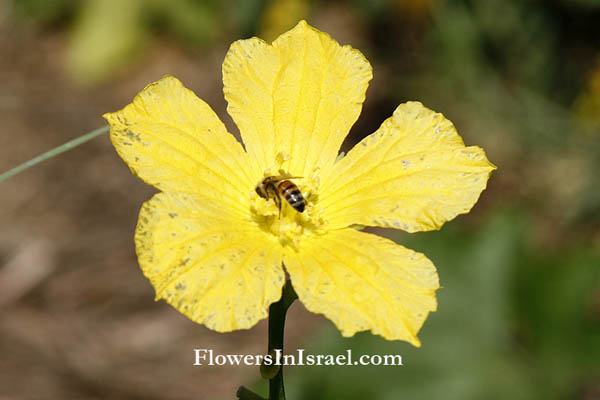Loofah/Lufah, לופה
| Scientific name: | Luffa aegyptiaca Mill. | |
| Synonym name: | Luffa cylindrica M. Roem. | |
| Common name: | Sponge gourd, Loofah/Lufah, sponge gourd, vegetable sponge, bath sponge or dish cloth gourd | |
| Hebrew name: | לופה | |
| Arabic name: | لوف | |
| Family: | Cucurbitaceae , Cucumber family |

|
| Life form: | Annual,vine | |
| Stems: | Five angled stems with tendrils on the axils of leaves to facilitate climbing; vine more than 9 m long | |
| Leaves: | Alternate, palmately lobed; hairless, serrated margin | |
| Inflorescence: | Staminate flowers in racemes of 4-20 and contain five free stamens; pistillate flowers either singly on a separate node or in association with staminate inflorescence; the lower nodes usually bear only staminate inflorescence, middle nodes both staminate inflorescence and pistillate flowers, and terminal nodes only pistillate flowers | |
| Flowers: | Monoecious,5 yellow petals; 5-7.5 cm in diameter | |
| Fruits / pods: | Gourd, shaped like cucumbers, green with longitudinal marked lines, up to 60 cm long and c.7.5 cm in diameter, shaped like a large cylindrical pepo (a fleshy watery fruit); flat blackish seeds | |
| Flowering Period: | Summer | |
| Habitat: | Well drained sandy loam soil, rich in organic matter |

Derivation of the botanical name: Luffa, from Egyptian Arabic lufah, the Arabic name of the plant. aegyptiaca, from Egypt. cylindrica, κυλινδροϛ cylindrus, cylinder, roller; cylindrical.
|